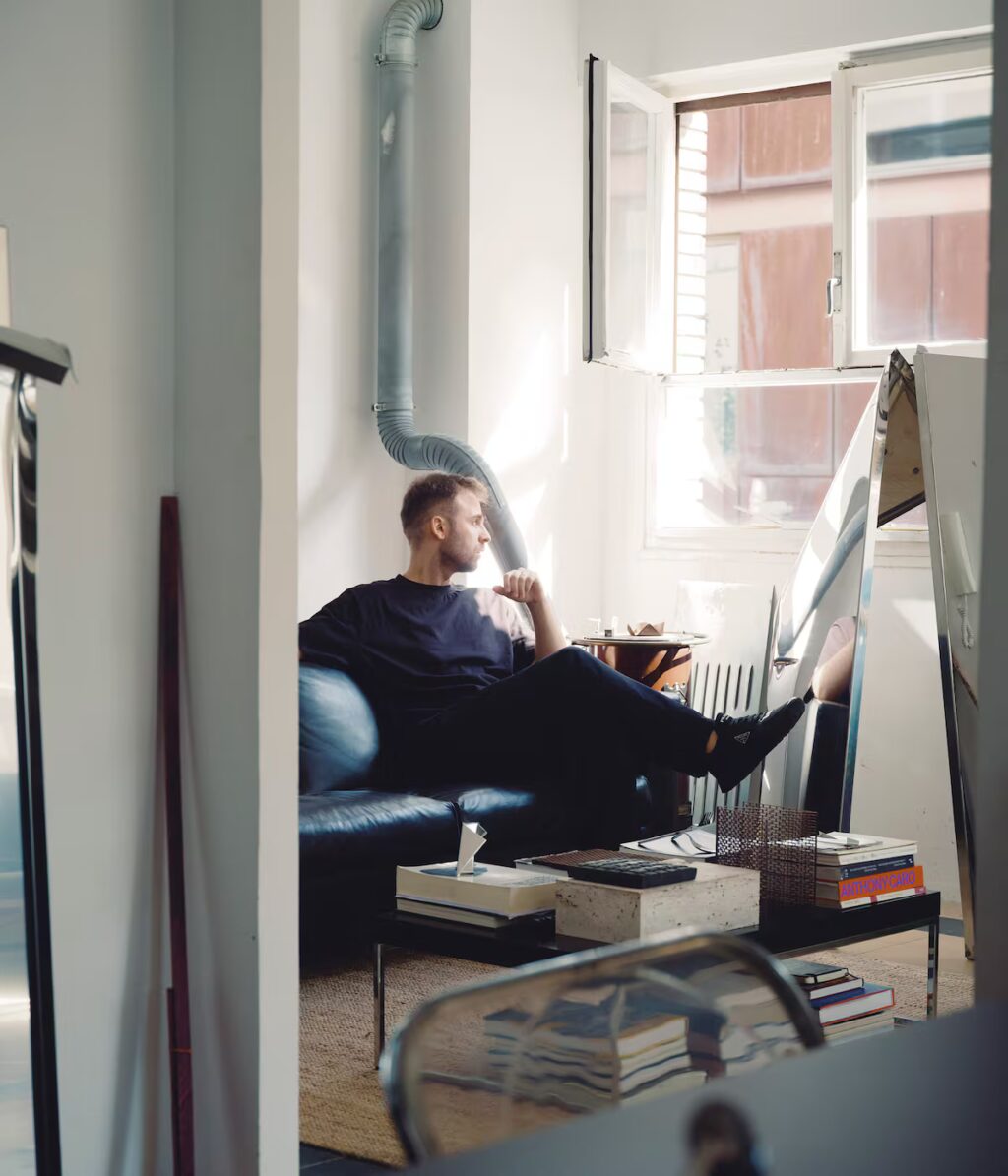
This is the requiem for a defunct house. A dead, embalmed place where, amidst the lack of confinement, an emotional couple arrived and removed their bandages, cleaned their wounds, and breathed new life into them. Artist Rafa Munárriz (Tudela, 35) and his girlfriend, Estefanía Sánchez, have arrived at a dilapidated, seemingly uninhabitable office in a building constructed during development in Madrid’s Prosperidad neighborhood. They agreed with the owners on an affordable price in exchange for the ability to make what was inhospitable as close to a home as possible. In short, face a reform with their own means, even if they were not the owners. Five years later, after this resurrection, they were forced to take to the streets. When you read these lines, your illusion will have expired.

Munárriz sums it up best: “Someone like me, in the Seventies, could buy a small apartment. Now who can think that? Speculation has made it impossible. All this precariousness has made it increasingly difficult to access a dignified home, with which one identifies. With this house and its renovation I want to propose a response to the system. When I arrived here, I had been living here for 10 years in different houses that were not mine. Understanding that owning something in the near future was impossible, I chose to engage in it as if it were. It’s the closest thing my generation has to that idea of having something of your own: pretending it’s yours. Then comes the end of the contract and the market puts you in your place.
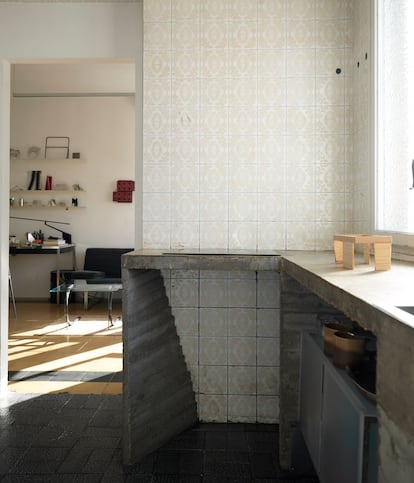
Together with his girlfriend, he lifted a carpet covered in immemorial dirt, took care of the floor he found underneath until the original hydraulic flooring was saved, scratched gotelé, preserved the tiles from the seventies, removed doors, knocked down walls, connected windows together, searched for light and made limitation a virtue. “A friend told me: ‘This house was only possible because you built it out of precariousness’. Maybe it’s one of the very few that appear in a magazine like this where everything was done for rent, without resources, just for the will to make it happen. It’s not part of the economic power of having a good architect. And, I have to be honest, I’m not even an interior designer, I’m a sculptor. I could only afford to do it like this: with my hands, step by step, without everyone. “The decisions come taken out of necessity.”
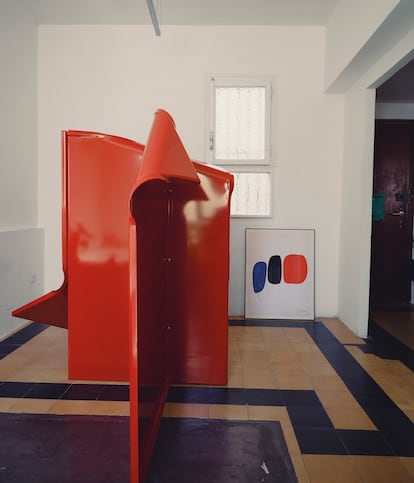
It has become an experimental reform. That he wanted to build a concrete structure in the kitchen inspired by the brutalism of the nearby Church of the Mexicans in Madrid? Well, he took advantage of the remains of the formwork that were thrown into the construction container in the building opposite. That the owners have not fulfilled their commitment to provide heating? He brought an old stove and installed the ventilation pipe himself. That there was no furniture in the bathroom or kitchen? He invented a wooden one shared by both rooms. What would have been ruined in the lamps? He did his thing. “I decided to keep everything as little as possible. At the same time, I had to learn about plumbing, electricity, everything. Now I can tinker,” he smiles. He has just a couple of whimsical objects, an old black leather Pollock sofa by Rodolfo Dordoni for Minotti, a Trapèze dining table by Jean Prouvé for Vitra and a 1973 screenprint by Calder that he traded for work with what was his gallery, Pelaires, for 10 years. He made the living room table himself and from it Archivo Functional was born, his project to create industrial design for others. Something he has just put into practice by designing the metal structures for the renovated kiosk of the La Mosca warehouse in Madrid.
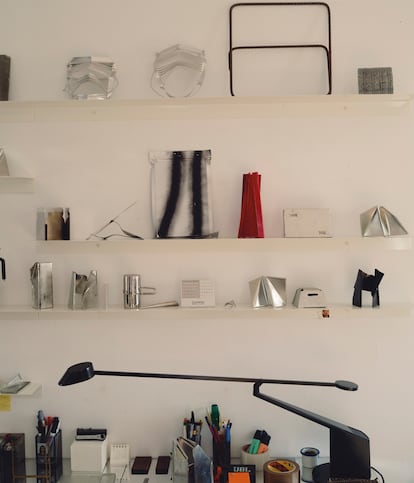
Building this house was like taking a self-portrait. The same one that he has sculpted over the years through his own sculptural work. His work seeks to distort the coldness of the industrial by giving it an organic twist, where the human gesture prevails. Review his pieces and you will only see self-portraits, snapshots of his life: bending aluminum sheets, a damaged guardrail, shop shutters that open or close the passage… Decontextualized urban elements that delimit what is accessible and what is not in public spaces, relative blocks that force us to rethink our place in the world.
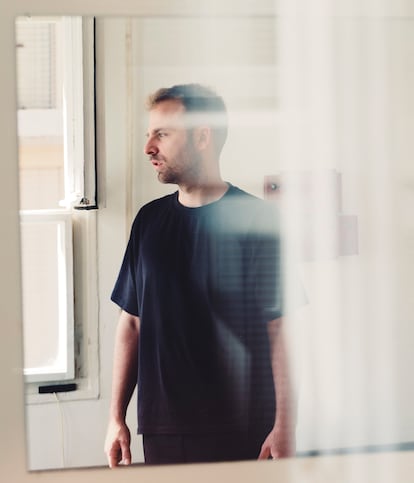
He arrived in this apartment after passing through a tunnel, figuratively and literally, that of the installation of two six-meter-long pieces that he built in galvanized sheet metal in his last solo exhibition in Pelaires shortly before the pandemic. A very narrow passage not suitable for claustrophobics, like him. “I became aware of my claustrophobia relatively recently. And I realized that a lot of my work, of questioning the privatization of space, comes from that. As a child I had a recurring dream: I was closed in a space and I couldn’t get out. The same thing happened to me with this house. I gave so much and was expelled from it so aggressively, that I had to face my fears, the idea that it was closing me in and, at the same time, it was very difficult for me to leave this space because of the way in which it “restricts market speculation”. There is light at the end of that tunnel. Munárriz reflects thus: “This whole reform has been a search for escape points and opening towards the outside. And what is the goal of opening? Go out and understand yourself from the outside. I’m in that process.”

Fate is sometimes generous and lights the way out for us. An evolution towards open spaces awaited him. After installing the museum’s inaugural work among the vineyards designed by Alto de Pioz, a Guadalajara winery where a boutique hotel designed by Tadao Ando will also be built, has just won the 1st Plastic Arts Production Competition of the Montenmedio Contemporánea Foundation. He will soon mount that sculpture in this iconic open-air museum in Vejer de la Frontera (Cadiz), where it will coexist with pieces by James Turrell, Olafur Eliasson and Maurizio Cattelan. A logical evolution in his career. “My works have always invited us to reflect on what’s inside and what’s outside. I’ve also thought a lot about how to work from the inside, but staying outside the art system. I hate attending my own openings. I understand that I have to be on the social side, but I like that there is a distance between the professional and the artistic. That’s why I liked so much the intimacy of working on a house that I felt was mine in the intimate, emotional sphere, without that pressure of having to share it with someone. But now that’s gone lost, perhaps “It’s time to change perspective and look outside” has arrived.






